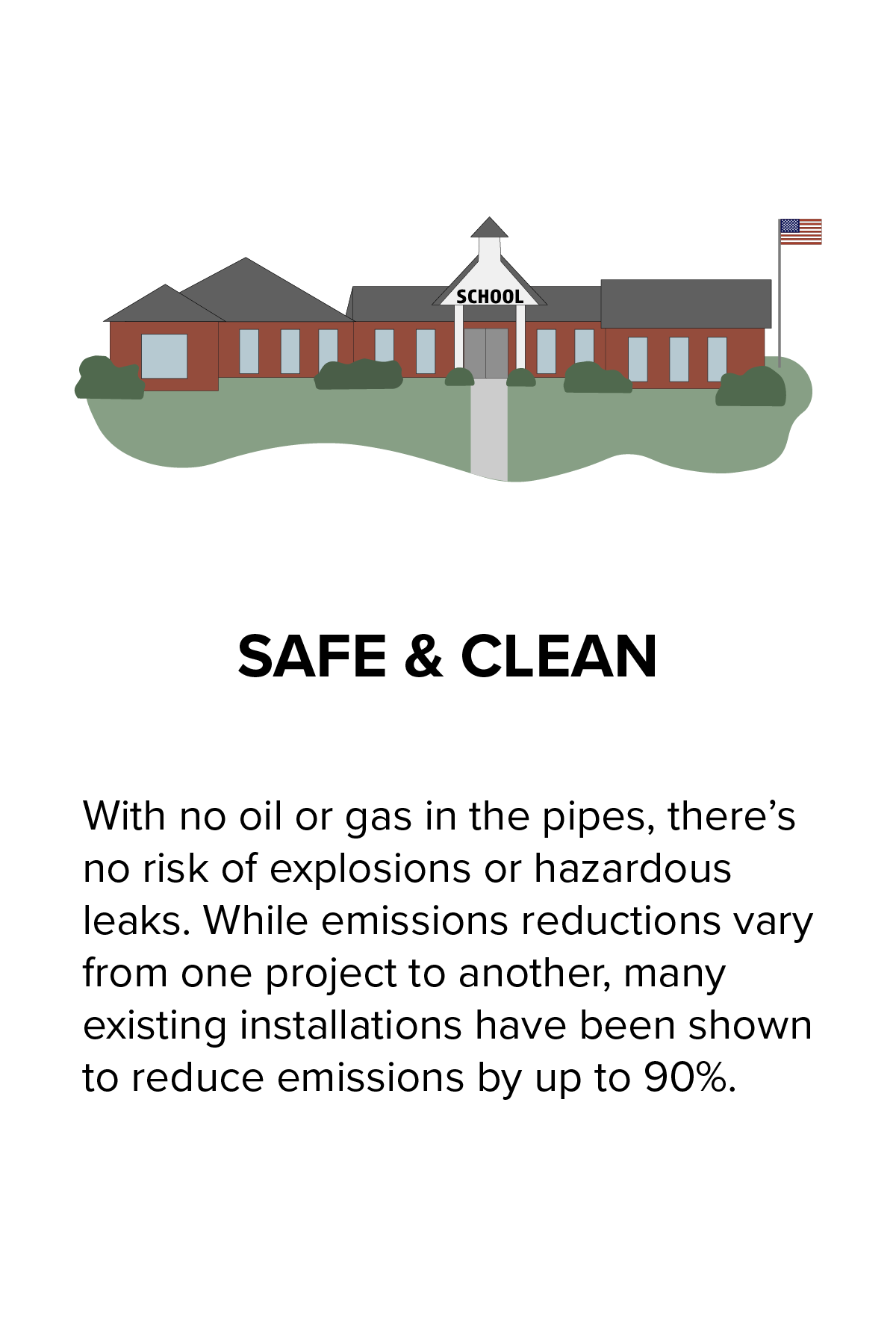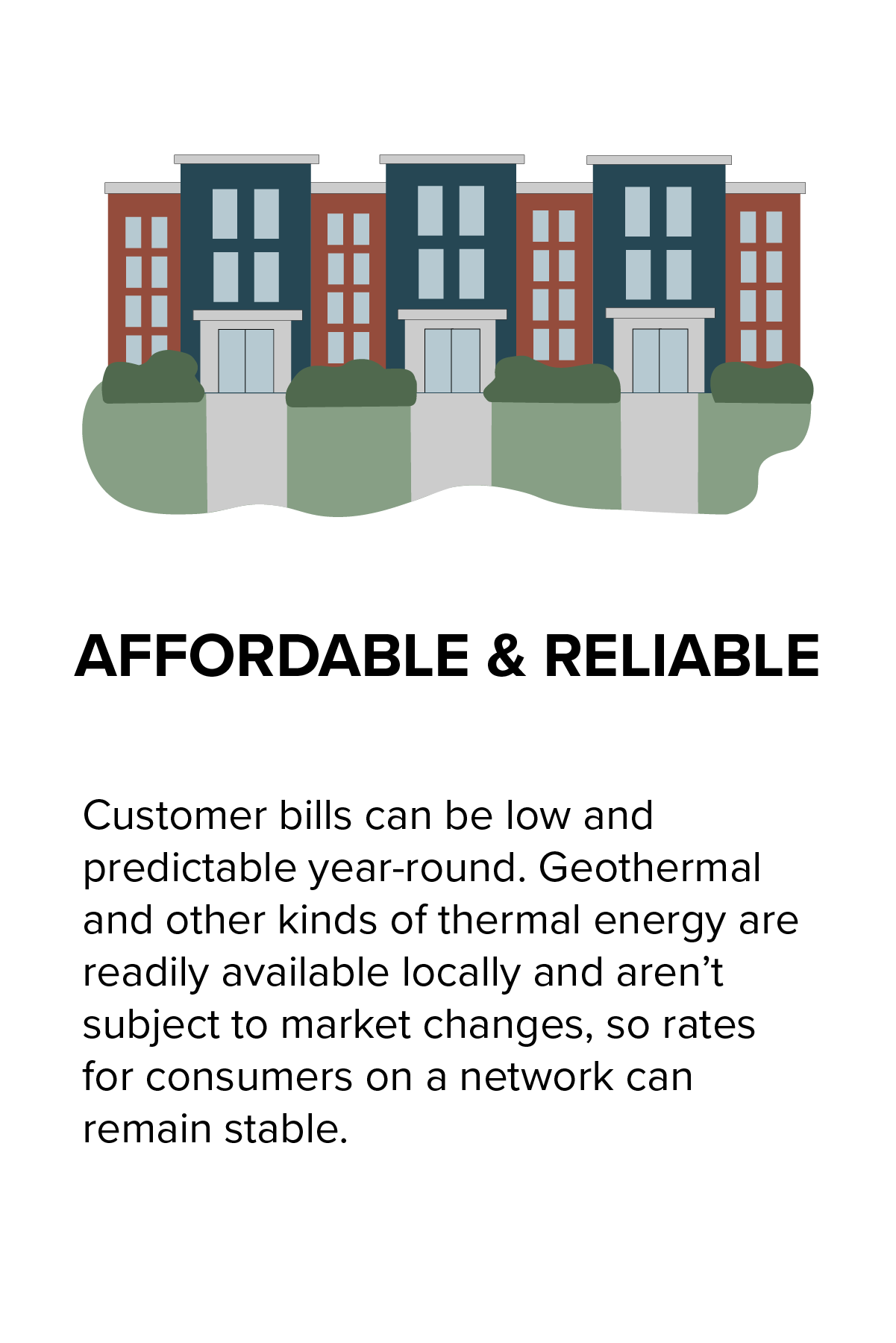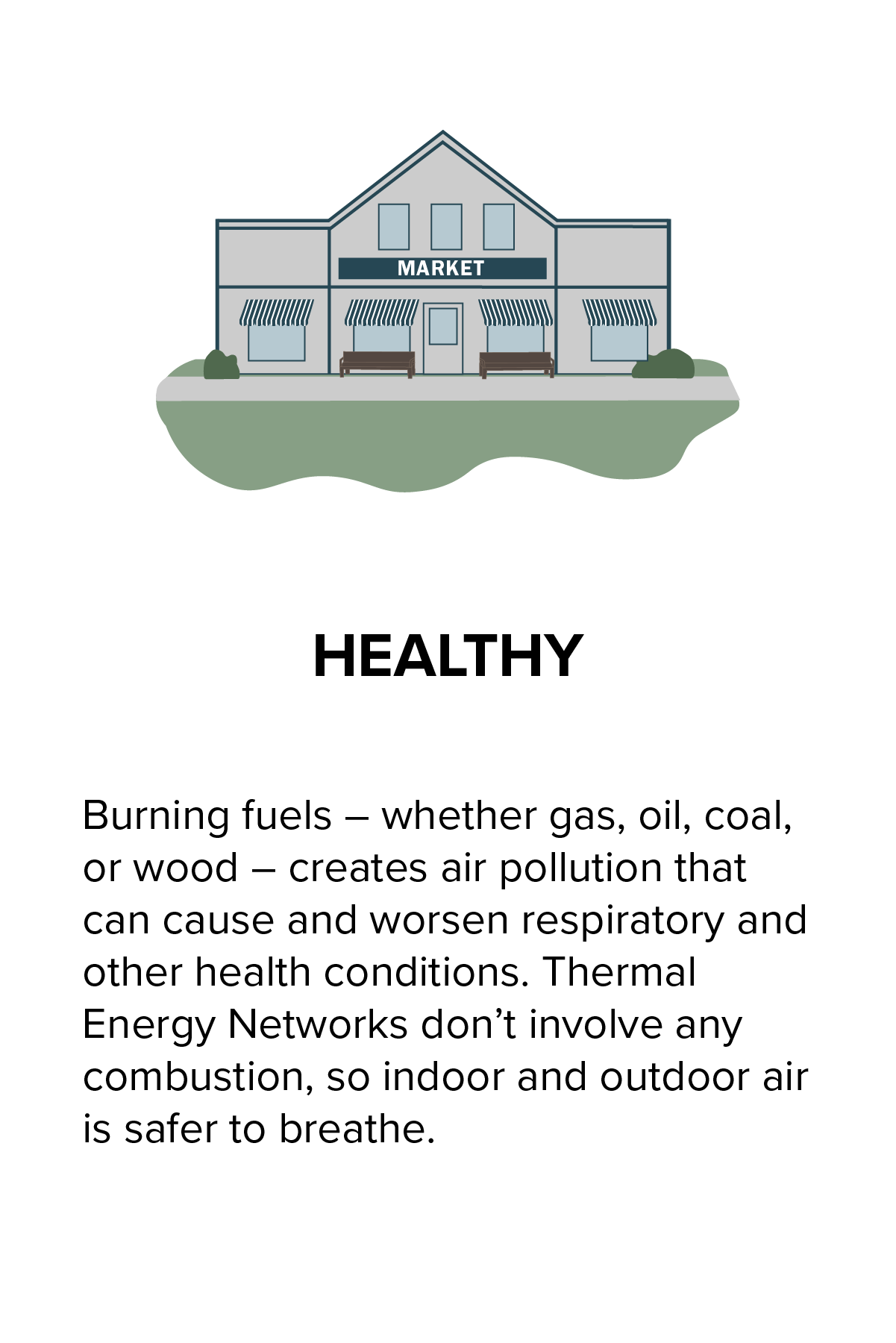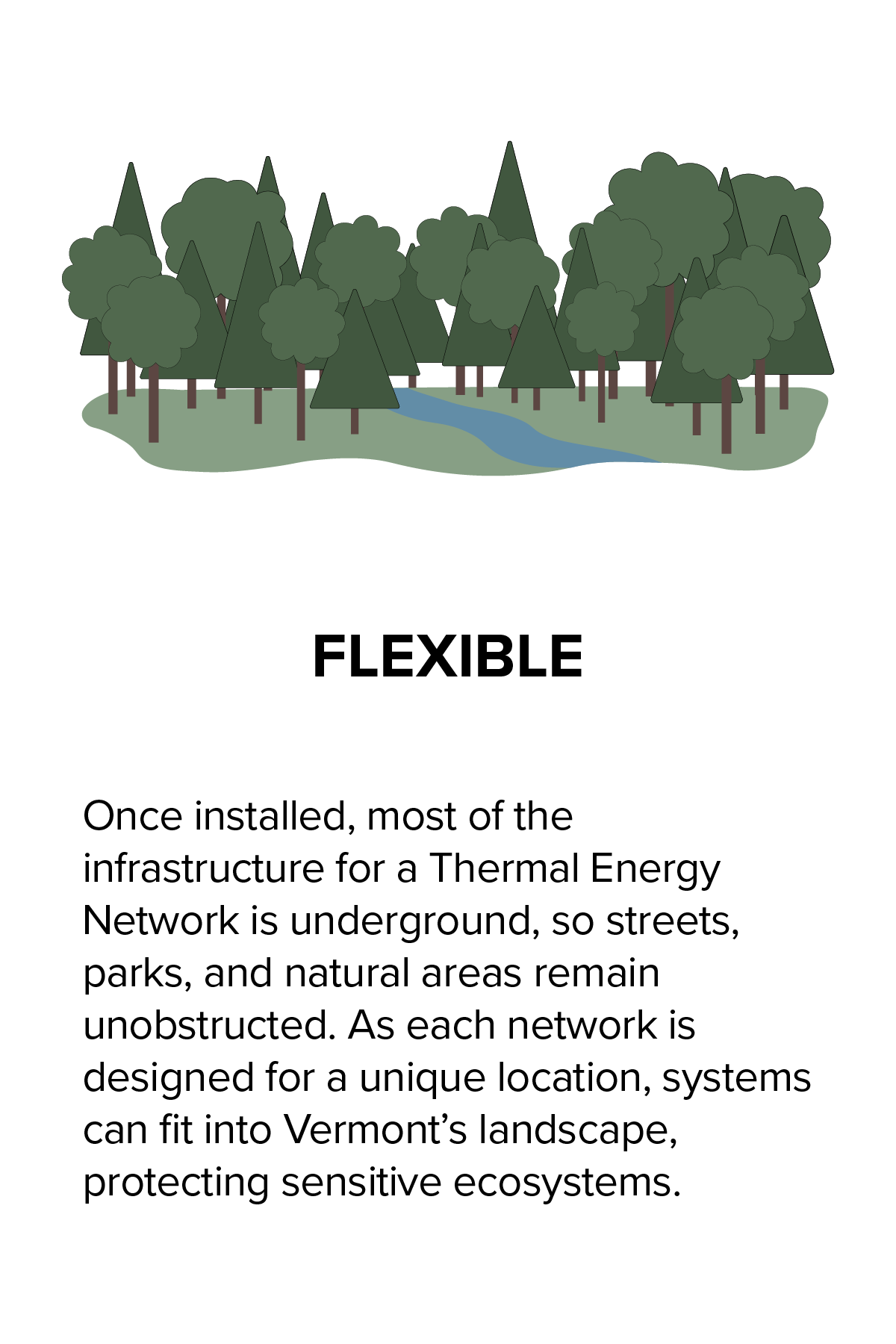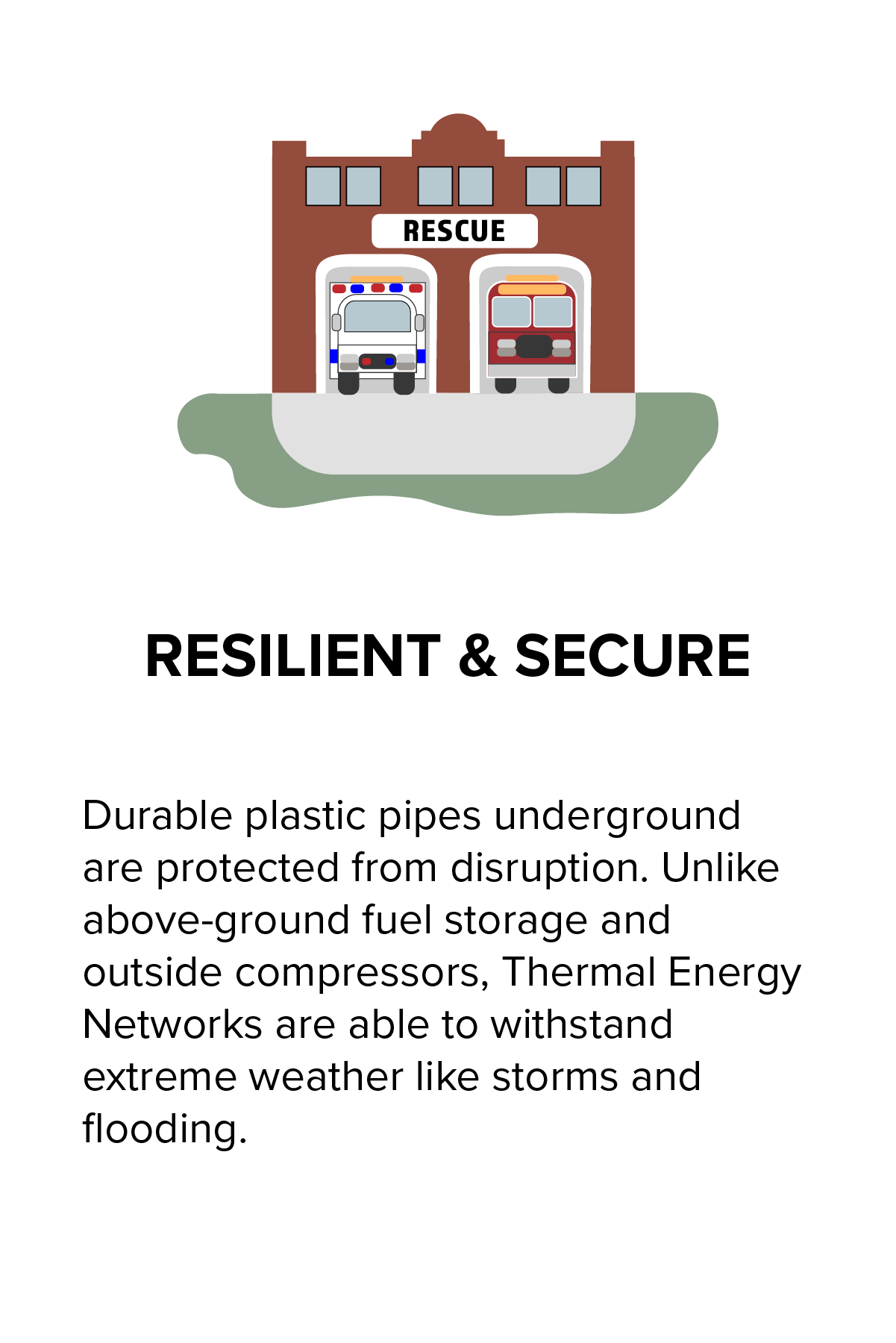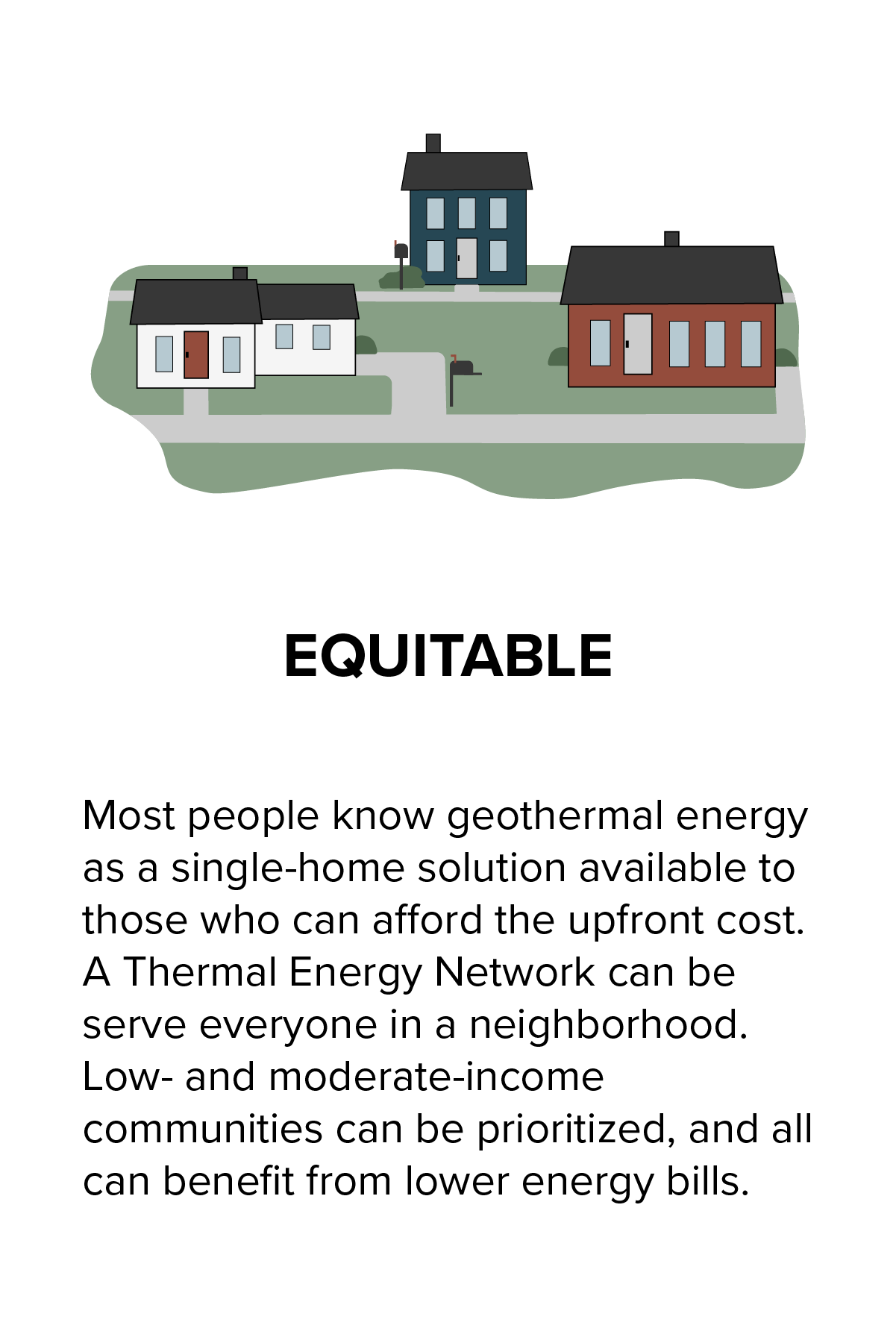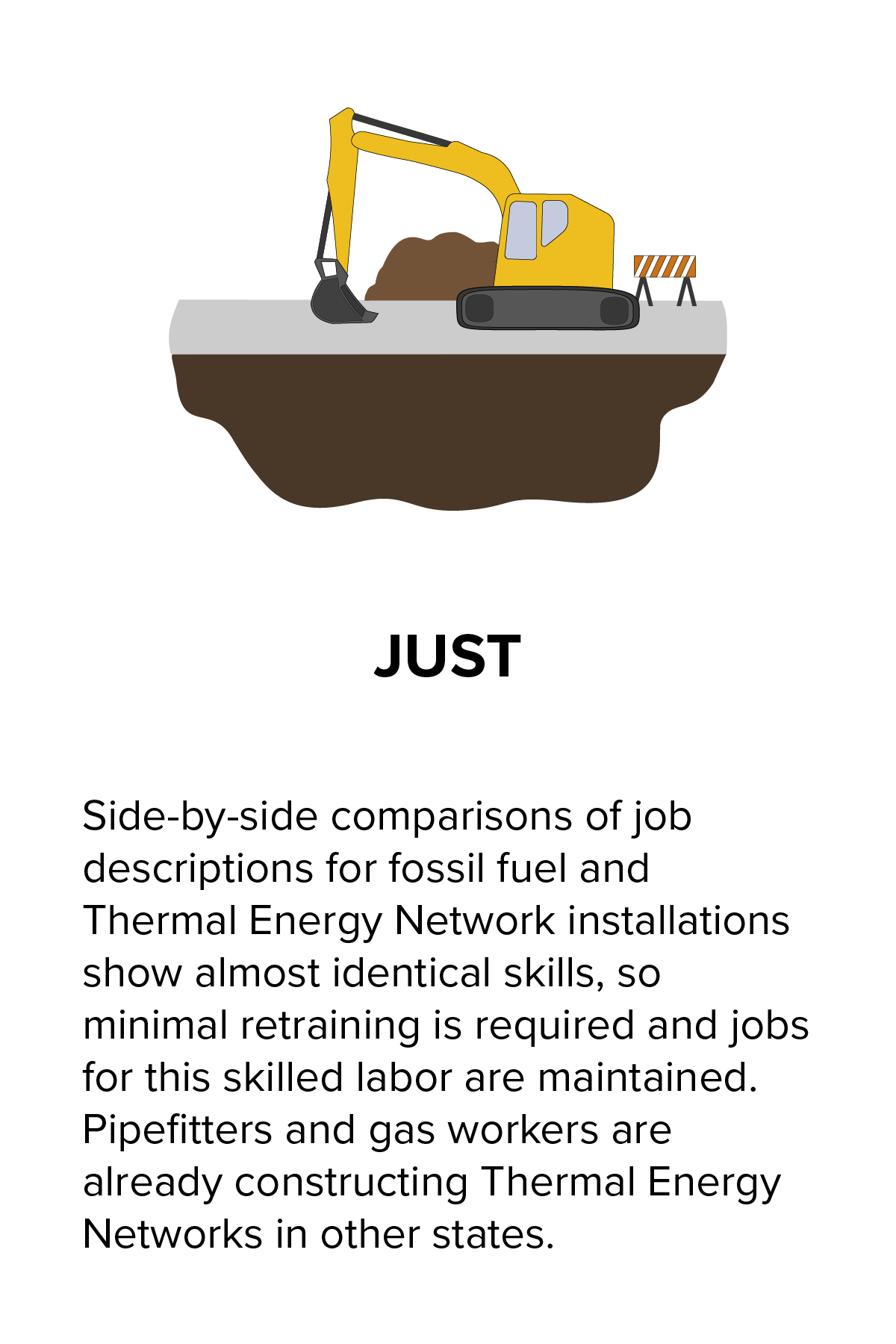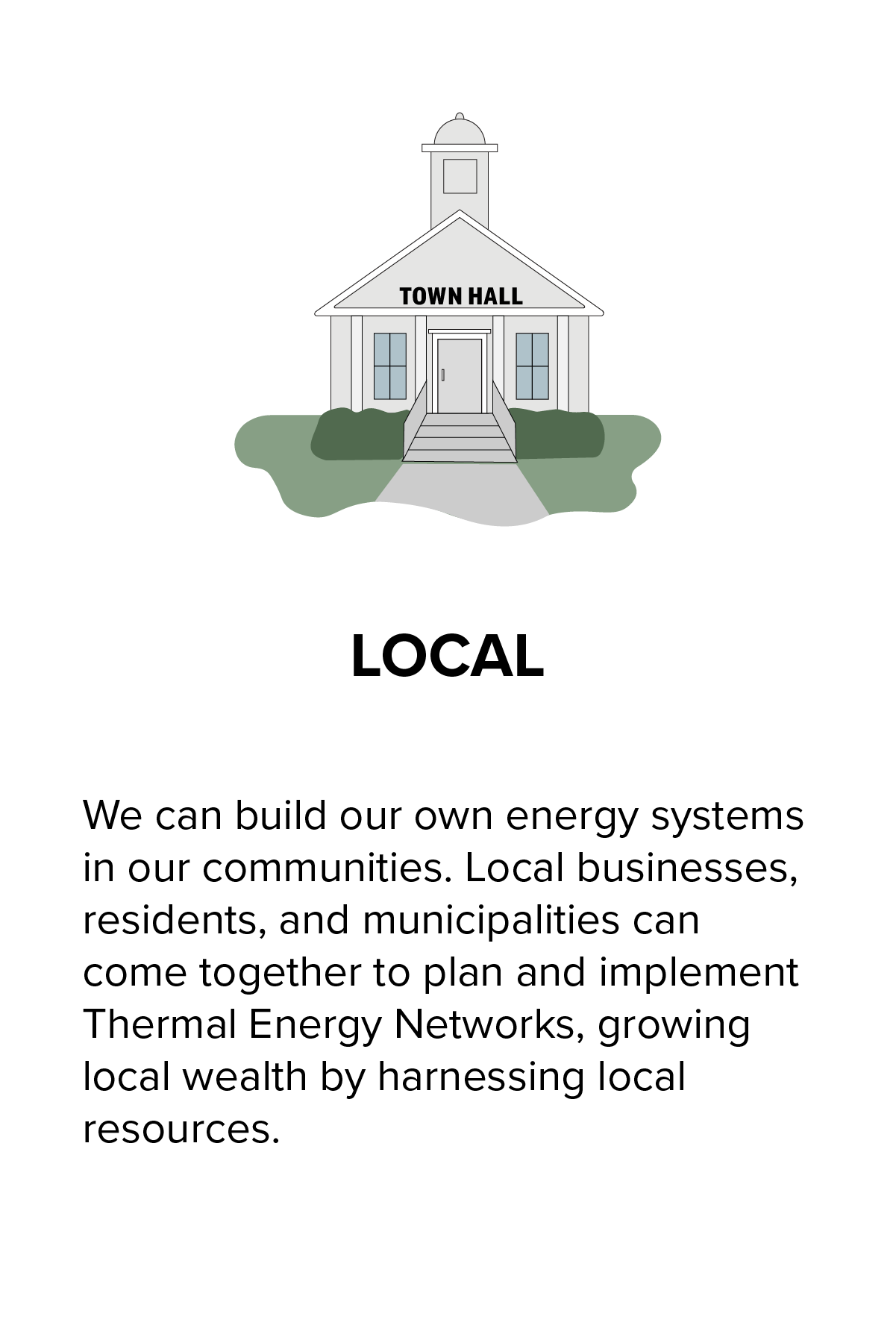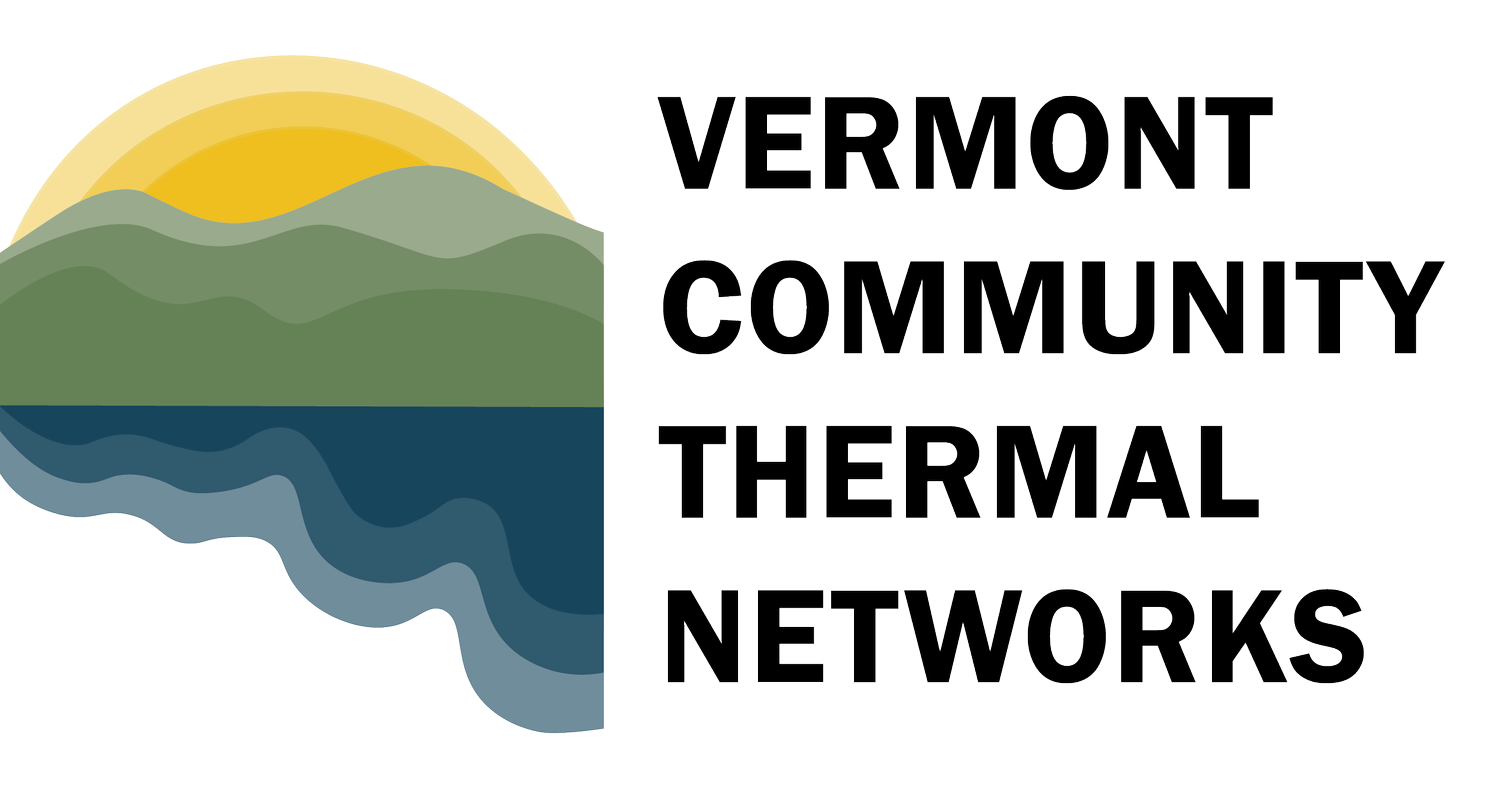THE BASICS

In Vermont, we have an opportunity to create our own clean heating and cooling systems.
We don’t have to rely on importing fuels from out of state or install air source heat pumps in every building. Including Thermal Energy Networks in our mix of solutions can bring multiple benefits to many of our communities, including making energy bills more affordable, increasing resilience, reducing electric grid peaks, and bringing safe, clean thermal energy to our homes.
You may already know how a geothermal system works for an individual home:
When you turn on your heat, the ground source heat pump inside your house compresses warmth drawn from underground, delivering it into your home as heat.
When you need cooling, the process reverses. The same heat pump delivers cool air and extracts heat, returning it to the earth.
All that heating or cooling comes from underground where the earth is a constant temperature. Water-filled pipes bring that temperature to your heat pump, where it’s concentrated into hot or cold air to keep you comfortable in summer or winter.
What is a Thermal Energy Network (TEN)?
“Thermal Energy Network” is an umbrella term that can include networked geothermal and other systems that use water in pipes to capture, re-use, and share thermal energy between buildings.
Networked geothermal systems use water-filled pipes in closed loops underground to both heat and cool buildings in a neighborhood or town center. Network pipes are installed at the same depth as gas or water pipes and are connected to individual ground source heat pumps.
Thermal energy can be drawn out of the earth, returned to the ground for storage, and shared between buildings with different heating or cooling needs.
Thermal Energy Networks (TENs) can also capture existing waste heat from building ventilation or wastewater and put it to use to heat or cool buildings in the network.
The more neighborhoods and multi-use buildings that are linked to a shared system, the more affordable and efficient it gets.
This information is also available as a PDF: The Basics of TENs.
Networked geothermal systems and Thermal Energy Networks are already operational on college campuses and in communities across the country, including in Vermont.
Learn more about systems that relate to Vermont’s climate and local conditions:
Watch our short videos
Learn the basics of networked geothermal systems and Thermal Energy Networks, as well as how they can benefit us in Vermont.
Thermal Energy Networks are highly efficient.
As we reduce our use of fossil fuels for heating, transportation, and more, our electricity use will increase, creating significant demand on our electric grid.
Thermal Energy Networks are the most efficient thermal technology we have. Since they use less electricity than other solutions, they can help lower peak electric demand, reducing the amount of new electric infrastructure we’ll need to build and making electric bills more affordable for everyone.
What do Thermal Energy Networks look like?
Not much! Thermal Energy Network equipment is installed underground and inside buildings, so the systems are practically invisible once built. Geothermal borefields can be installed under fields, parks, and parking lots, which can then be re-planted or re-paved. Distribution pipes are laid under streets and between buildings at about the same depth as water and sewer pipes. Inside buildings, heat pumps that are about the size of a standard water heater can be installed in basements, utility closets, or overhead, and are connected to a building’s ventilation system to distribute heating and cooling.
Horizontal pipes connect buildings at Smith College in Massachusetts and Oberlin College in Ohio.
These closed loop Thermal Energy Networks will heat and cool multiple buildings safely, affordably, efficiently, and reliably for decades to come.
Inside buildings, insulated pipes transport thermal energy between the building’s heat pump and the rest of the network. The size of the heat pump can vary, depending on whether it serves a commercial (center) or residential building (right).
In Vermont, we can build and benefit from our own clean energy systems that are:
